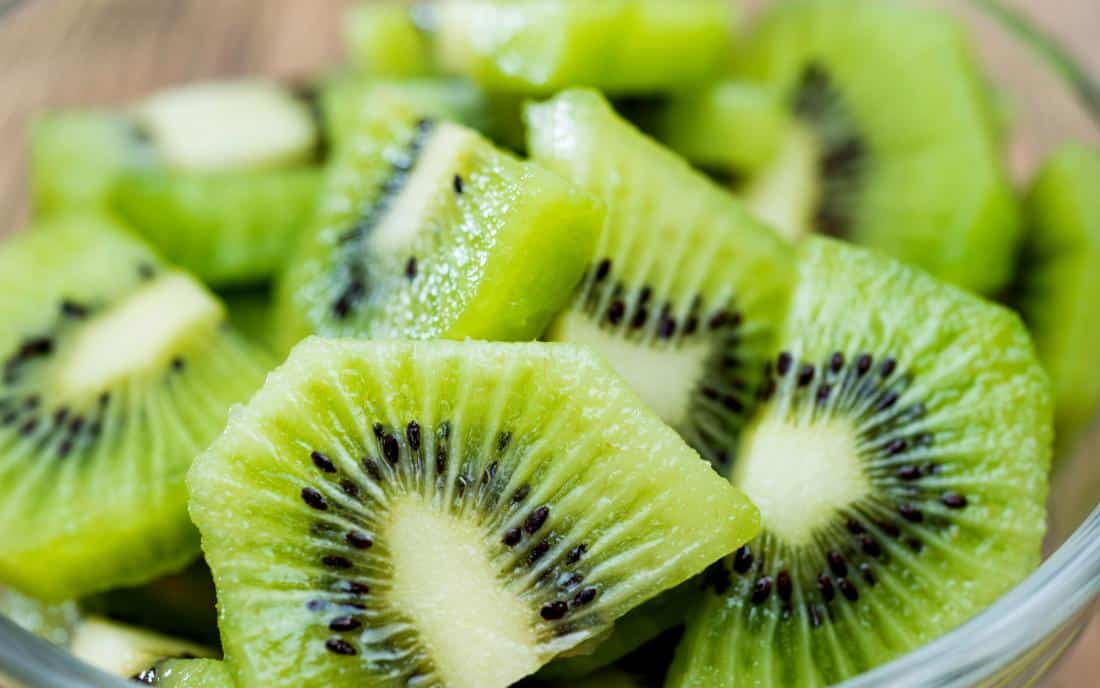What is Kiwi?
Kiwi is an edible fruit native to mainland China and Taiwan. California and New Zealand commercially cultivate this species. It is famous for its slightly acidic taste, and can be eater cooked or raw. Most chefs use kiwi juice as a meat tenderizer, but most importantly, the fruit is potent in both vitamins C and K.
Kiwi is a healthy and delicious snack. It also has many health benefits. However, is it also suitable for diabetes? The answer is YES. This article will help you identify the benefits of kiwis in people with diabetes.
Is Kiwi Good for Diabetes?
Kiwi is one of the superfoods considered beneficial in managing blood sugar levels. What are its benefits for blood sugar regulation? First, let us learn about its glycemic index score.
GI, or glycemic index, refers to a rating system for foods that contain carbohydrates. This system measures how food quickly affects blood glucose levels. If a specific food’s GI score is high, it means that blood sugar levels can spike rapidly. However, if the score ranges from low to medium, the food is suitable for diabetes management. Some of the best foods with a low GI are wholegrains, some fruits, vegetables, beans, and lentils. How about kiwi’s GI score?
According to studies, kiwifruit has a glycemic index of around 43-47. This score is safe for diabetes as it is below 50. It also demonstrates kiwis’ efficiency in helping manage blood sugar levels.
Besides the glycemic index of kiwi, its fiber content is also high. What does it mean?
A fiber-rich food plays a vital role in proper diabetes management. It is a type of carbohydrate that humans do not completely digest. It has many benefits, and one of them involves blood sugar stabilization. It works by slowing down the body’s digestion process, preventing a spike in blood sugar. This process can prevent the onset of type 2 diabetes.
Let us also learn the nutritional value of a 100-gram serving of kiwi. Consider the following:
- Calories – 61
- Fat – 0.5 grams
- Sodium – 3 mg
- Carbohydrates – 15 grams
- Sugar – 6.7 grams
- Dietary fiber – 2.1 grams
- Protein – 0.8 grams
- Copper – 14%
Besides the mentioned components of kiwi, the fruit is also rich in the following nutrients:
- Vitamin C
- Vitamin K
- Folate
- Potassium
The composition of vitamins C and K enables the body to repair tissues and regulation of blood calcium levels. The presence of copper and potassium supports bone development and nerve health.
Other Benefits of Kiwi for Diabetes
Besides the benefits mentioned above, here’s a better understanding of the advantages of Kiwi over its counterparts.:
Kiwi helps regulate blood pressure.
One of the complications of diabetes is hypertension or high blood pressure. According to research, vitamin C in kiwi helps reduce blood pressure and regulate proper blood circulation.
Kiwi helps in weight loss.
Weight loss management is essential in controlling type 2 diabetes. Good enough, kiwi’s high fiber content increases the body’s metabolism, which can assist in losing weight.
Kiwi promotes healthier skin.
Uncontrolled diabetes can lead to skin problems, such as acne, pimples, and rashes. Thankfully, kiwi stimulates collagen, a compound that provides better skin nutrition.
Kiwi is necessary for digestion.
Constipation and indigestion are among the complications of diabetes. Although rare, they can still significantly impact someone’s health if not addressed immediately. Fortunately, kiwi is rich in fiber, which can help with bowel movement and assist in the growth of gut-friendly bacteria.
Takeaway
Kiwi is indeed safe for diabetes. It is one of the best fruits that individuals with the condition can enjoy. Adding it to your daily meal plan can help with blood sugar management. Your options can include the following:
- Making it a smoothie.
- Combining it with quinoa salads.
- Adding it as a topping for your daily oatmeal breakfast.
Finally, make the right choices today if you have diabetes. You should always eat the correct type of food for a healthier lifestyle.
Doctor’s Recommendation
It is best to adopt a low-carbohydrate diet, such as a ketogenic diet, because it allows for less intraday variation of carbohydrates consumed. Therefore, it is possible to more reliably titrate one’s medicines.



